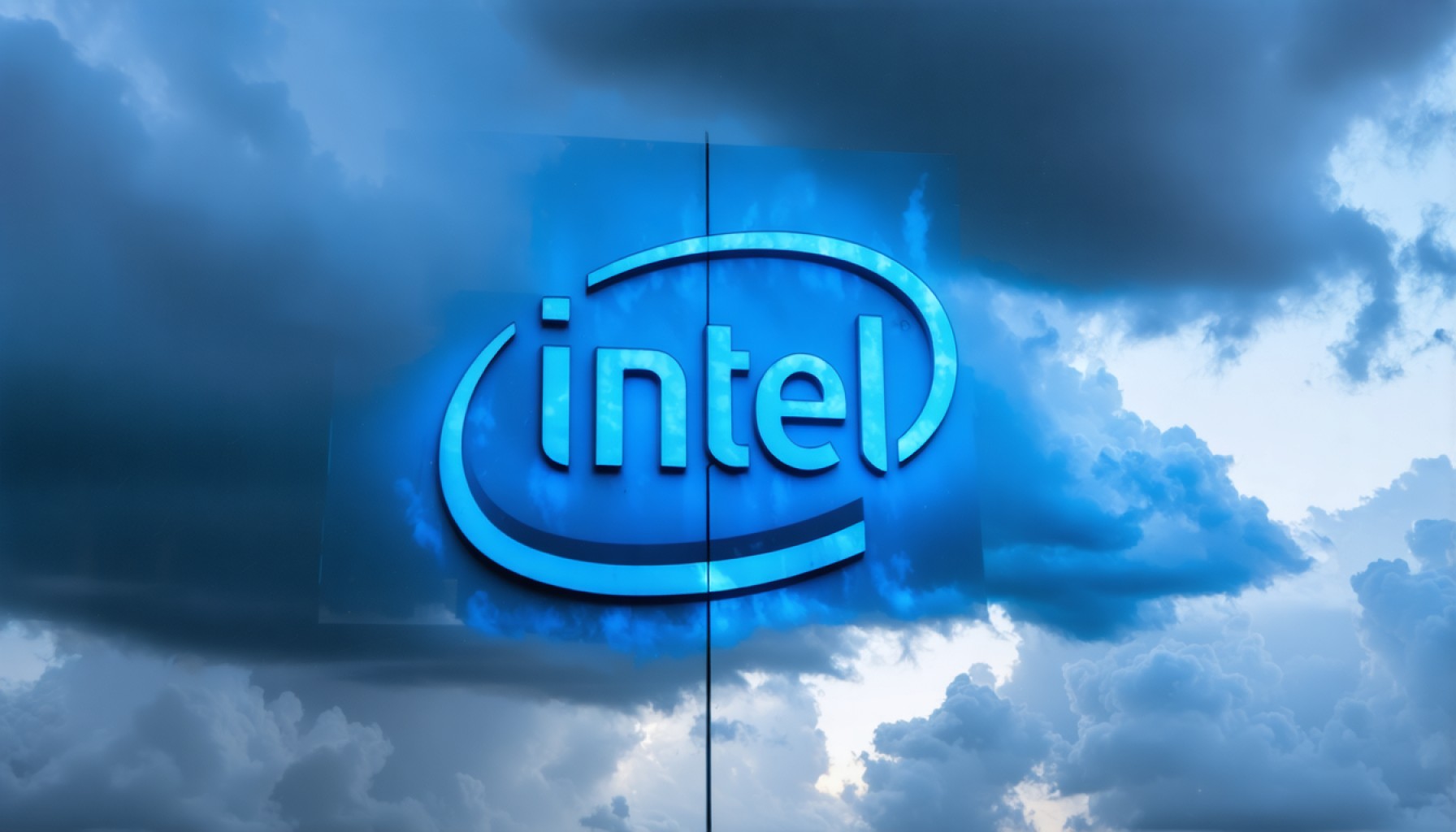- Intel’s stock declines by 2.5% amid major leadership changes and external pressures.
- New CEO Lip-Bu Tan aims to revitalize engineering and expand manufacturing to compete in the AI server market.
- Tan acknowledges Intel’s past challenges and the steep climb required to regain its competitive edge.
- Commerce Secretary Howard Lutnick emphasizes the need for increased domestic investment before federal funding support.
- Investors face a complex situation with optimistic strategies from Intel and potential changes in governmental funding policies.
- Adaptability is highlighted as crucial alongside innovation in the fast-evolving tech industry.
- Intel’s efforts exemplify the balance between overcoming immediate challenges and seizing future opportunities.
A storm brews over Silicon Valley, as Intel’s stock slips by 2.5% amidst turbulent announcements from both corporate and governmental ranks. The new CEO, Lip-Bu Tan, steps into the spotlight with a candid admission of the steep climb ahead. His words paint a stark picture of Intel’s recent past—lagging behind in the fiercely competitive world of chip innovation and struggling with the pervasive challenge of adaptation.
Tan’s vision is clear, albeit daunting: steer Intel through these choppy waters by revitalizing its engineering teams and expanding its manufacturing footprint. His strategic blueprint sketches a future where Intel doesn’t just play catch-up but takes aim directly at heavyweights like Nvidia in the burgeoning AI server market. Tan’s commitment to reversing Intel’s fortunes speaks to the resilience and resolve that might just take the corporation back to the cutting edge.
But just as Intel looks inward to reshape its future, external pressures mount. Commerce Secretary Howard Lutnick signals a tightening of the purse strings, suggesting that federal funds won’t flow until chipmakers bolster their domestic investments. Such a move directly impacts Intel, previously a significant beneficiary of governmental financial support.
For investors, this dual narrative of cautious optimism and governmental pressure presents a complex tapestry to unravel. The CEO’s frankness about the challenges Intel faces serves as both a reality check and a rallying cry for innovation. Meanwhile, Lutnick’s stance on funding raises questions about the broader regulatory environment and its influence on the sector’s dynamics.
The unfolding scenario underscores a significant takeaway: in an era where technology races against itself, adaptability becomes as valuable as innovation. As Intel navigates this landscape, its journey serves as a stark reminder of the intricate dance between ambition and reality. This moment is a testament to the high stakes involved when technology giants recalibrate their course, balancing immediate obstacles with future possibilities.
Can Intel Reclaim Its Dominance in the Chip Industry?
Intel, once a dominant force in the semiconductor industry, faces mounting challenges. Amidst a 2.5% stock decline, the company’s new CEO, Lip-Bu Tan, has been candid about the hurdles ahead. Despite a stark picture of Intel lagging behind competitors like Nvidia, Tan’s vision is boldly forward-looking, aiming for a revitalization of Intel’s engineering prowess and manufacturing capabilities to re-enter the competitive fray of chip innovation, especially in the AI server market.
Market Forecast & Industry Trends
The semiconductor industry is undergoing rapid changes, with AI and machine learning technologies driving a significant portion of growth. According to Gartner, the AI chip market is expected to grow at a compound annual growth rate (CAGR) of over 30% through 2028. Intel’s strategy to expand its presence in this space is pivotal, but competition is fierce. Nvidia currently dominates the AI hardware market, and AMD and other emerging players are intensifying their efforts as well.
Government Policies and Their Impact
Commerce Secretary Howard Lutnick’s indication of stricter funding regulations reflects a broader governmental push for companies to enhance domestic manufacturing. This policy targets reducing dependence on global supply chains. For Intel, which previously benefited from government support, meeting these new expectations is crucial. The CHIPS and Science Act, designed to bolster U.S. semiconductor innovation, might provide pathways for additional support if compliance is achieved.
Pros & Cons Overview
Pros:
– Leadership Vision: Lip-Bu Tan’s strategic blueprint has the potential to reinvigorate Intel’s innovation efforts.
– Manufacturing Expansion: Expanding Intel’s manufacturing footprint can lead to more control over production timelines and quality.
– Focus on AI Market: Targeting the rapidly growing AI and machine learning sector could yield significant future revenue.
Cons:
– Intense Competition: Rival companies like Nvidia and AMD are not slowing down, which means Intel must execute its strategies flawlessly.
– Governmental Pressure: Increased federal regulations and funding conditions could pose challenges to Intel’s financial strategies.
– Technological Lag: Catching up technologically might require substantial investment and time.
Security and Sustainability
Security remains a critical concern in chip manufacturing, particularly for AI applications. Intel will need to continue fortifying its chip security to regain consumer and business trust. Moreover, sustainability practices are increasingly important. Companies are expected to innovate sustainable production methods, an area where Intel will need to show substantial progress.
Actionable Recommendations
1. Strengthen R&D Efforts: Allocate resources effectively to core research areas to enhance chip performance and power efficiency.
2. Partnerships and Collaborations: Form strategic alliances to leverage strengths in AI and other emerging technologies.
3. Enhance Domestic Production: Comply with governmental requirements to secure funding and strengthen local supply chains.
4. Consumer Engagement: Build customer loyalty through transparency in security protocols and sustainability efforts.
Intel’s pathway to regaining its former glory in the chip industry will undoubtedly be arduous, requiring focus on innovation, adaptability, and strategic compliance with government regulations. By embracing these initiatives, Intel can position itself once again as a leader in the chip market. For more insights about the semiconductor industry, visit Intel.
